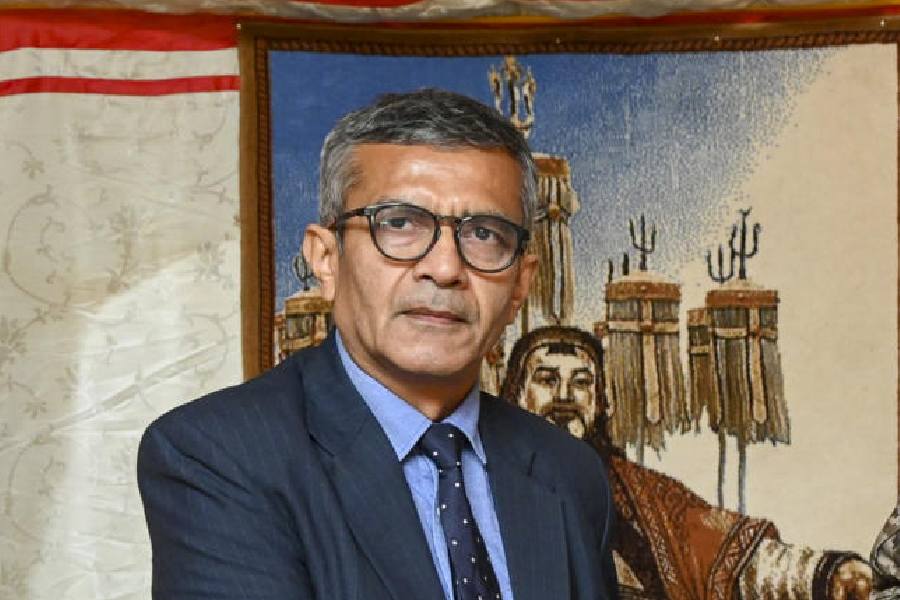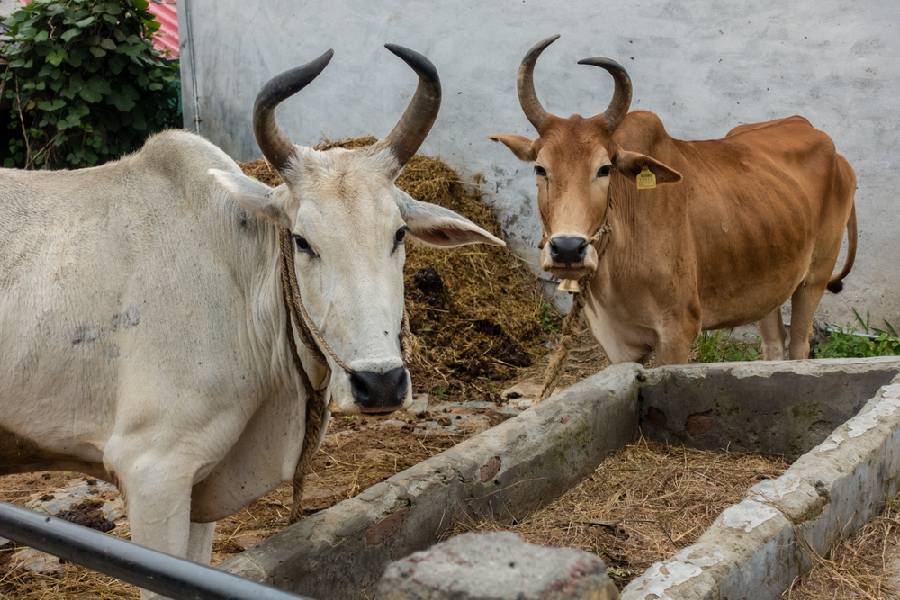 |
| Aer is perched 34 floors above the bustling streets of Worli, Mumbai, and is outfitted with jigsaw-shaped white outdoor seating |
High end hospitality and ultra-luxe interiors are making a hot couple this season. Hotfoot it to Spectra, The Leela Kempinski Gurgaon’s 16,000sq ft signature rest-aurant that has been created at an estimated cost of $9 million (Rs 42 crore) and is believed to be India’s most expensive dining outfit currently.
The designer here is Japanese firm Studio Spin Inc, which has given a refined look to the restaurant through strategically located wine displays, a dessert bar, island kitchens showcasing cuisines from around the world and private and semi-private dining enclaves along with a private lounge.
And at The Park Pod, Chennai, grab a bite at the chic private dining area that’s enclosed by fire engine red screens designed by couturier Rajesh Pratap Singh. Other décor accents in The Park Pod’s restaurant Italia include ‘Louis Ghost’ chairs by French designer Philippe Starck. The property, designed by Vikram Phadke, has found its way into the exclusive Conde Nast Traveller’s Red Host List 2009 and is rated as one of the world’s finest new hotels. “The interiors are a startling mix of pop art and sophistication,” points out Lemuel Herbert, associate vice president and general manager, The Park Hotels.
 |
| The Park Pod in Chennai boasts of lacquered black tables and ‘Louis Ghost’ chairs by Philippe Starck |
Eating out is getting a makeover in India and not just on the dinner platter. Cutting-edge interiors, following the hottest global cues are the trend du jour. International design firms are creating edgy environments with highly sophisticated interior products and accessories. “The idea of space has altered like no other,” says Deepak Uppal, president-hotels, Vatika Hotels, which owns The Westin Gurgaon.
The latest Westin outfit in Gurgaon is slated for a September 1 launch boasting restaurants and public places designed by Australian outfit CSA, London-based urban design studio u+a and Japanese design firm Super Potato. It is racing at a frenetic pace to meet its launch deadline with hand-painted glass installations by Australian artist Nike Savvas in the main foyer, logs of paddock wood imported from Africa for the bar counter and a 24-hour coffee shop with walls texturised with grey beige traventine stone imported from Europe. The icing on the cake is a chic lobby corridor with metallic screens.
It’s true that design occupies the top slot of the luxury totem pole in contemporary hospitality. Sprawling spaces, private dining areas, live kitchens designed for interaction with the diners and top notch décor accessories are currently the hallmark of modern hotels and restaurants.
 |
| The interiors of Tote on the Turf have been given extra pizzazz with a grove of white metal trees |
Zip across to Setz, an upscale standalone eatery in the capital, to dine within the confines of handcrafted walls clad with Izumiya stone, specially imported from Japan and landscaped terraces outfitted with a mist cooling technique to keep the Delhi heat at bay. Designed by Super Potato, Setz flaunts seven theatre-style kitchens separated from the dining area just by a glass partition.
“The central dining area is placed around a large landscaped tree on the topmost floor of Emporio Mall and is surrounded by interactive kitchens (European, Coastal Indian, north Indian, Arabic, Chinese, Japanese and Thai) giving it a very gourmet theatre feel,” says Anirudh Singhal, corporate manager, F&B, DLF Emporio Restaurants, which owns Setz.
Live stations like the sushi counter and the Teppanyaki grill are the other showstoppers here. The Japanese section of the restaurant offers 20 seats on the grill. So guests are seated around the cooking grills and can watch chefs rustling up their made-to-order dishes.
 |
| ITC Royal Gardenia has vertical gardens irrigated by a state-of-the-art drip irrigation system |
Even at Spectra, there are high- octane design features such as an underlit glass floor and a large elongated cluster of lighting fixtures that has replaced the chandeliers of yore. “Liberal and coordinated use of glass, wood and marble make Spectra an interesting study in design,” says Vella Ramasawmy, general manager, The Leela Kempinski Gurgaon.
Major players of the hospitality game are also trying to introduce character in their constructions rather than going for the cookie-cutter template of hotels. For instance, the soon to be launched Swissotel Kolkata Neotia Vista in New Town, Calcutta, has embellished its interiors with artwork by Mumbai designer Krsna Mehta. While the fabrics used for the artwork across the hotel is Bengali, motifs, carpet designs and wall panels are inspired by the Bengal tiger and Sunderbans. “A light well floods the coffee shop level with natural light, reducing dependence on electrical lighting during the day,” says Kapil Bhalla, principal architect of the property.
Inevitably these new age properties are being customised to appeal to the discerning set with an eye for detail. As Aditya Ramani, manager of Aer, India’s highest rooftop bar or ‘sky bar’ at Four Seasons, Mumbai, puts it: “We are talking about a very mature Indian glitterati here, which has done the rounds of tasteful interiors across the planet.”
Aer is perched 34 floors above the bustling streets of Worli and the well-heeled tippler has panoramic sea views and a ceiling of sky and stars for company here. “You are so high up, you feel as though you have been transported to a different place. All you can see is the sea and the lights of Mumbai spread out like a blanket beneath you,” adds Ramani. The minimalist design of Aer is courtesy a team of luminaries including designers Ritu Nanda and Elsie Nanji.
 |
| Spectra looks chic with strategically located wine displays, a dessert bar, island kitchens and more |
If design has taken centre-stage in the new scheme of things, premium accessories, eclectic furniture and one-of-a kind accent pieces follow close on its heels. For instance, Savvas’ installation artwork in The Westin Gurgaon is inspired by the interlinked notions of passing time, movement and travel.
“The vivid reds, oranges and yellows of the glass panes are significant markers of the beginning and end of day while the hues of cool blue and flashes of green reference the Yamuna river and the Aravali range,” says Uppal. The complete installation has been coordinated and managed by Urban Arts Projects, an internationally reputed Australian firm.
The Park Pod in Chennai too has a fling with all kinds of eclectic tableware. In Italia, feast your eyes on lacquered black tables set with a handcrafted line of white Limoges porcelain crockery called Hommage Point from tabletop specialists Raynaud. Complementing the fine porcelain is glassware from Reidel. Also, innovation is taken to the next level with its in-house water bar called The Absolute, a first in Asia, which offers 12 premium varieties of bottled water from five continents.
And at Setz, you dine on fancy plates made from hand-blown glass from Greek brand My Glass Studio. Other frills include bar accessories and glassware sourced from companies like UK-based Urban Bar and Impulse from Florida.
 |
| Setz has handcrafted walls clad with Izumiya stone, while the central dining area is surrounded by interactive kitchens |
Furniture, of course, is another highlight, if you are doing the rounds of properties that are experimenting with décor in a big way. Drop by at Aer for a sneak peek into bar’s jigsaw shapes of white outdoor seating, inspired by the Tokyo Pop series of furniture by Italian label Driade. A Love Bench by organic industrial designer Ross Lovegrove is placed as a statement piece at the entrance.
So, what’s the turn on for the new age patron who’s sampled the best in hotel luxury? “The consumer is a well- travelled individual who’s looking for new spaces and can appreciate a cutting-edge design concept when he sees one,” explains Malini Akerkar who owns DeGustibus Hospitality along with restaurateur husband Rahul Akerkar of Indigo fame. DeGustibus Hospitality has come up with the 25,000sq ft Tote on the Turf, a dining outfit, bar and event space all rolled into one.
Of course, located amidst a canopy of 100-year old rain trees and a backdrop formed by historic buildings and the Mahalaxmi Race Course, Tote on the Turf is a design connoisseur’s Mecca. Designed by Kapil Gupta and Chris Lee of Serie Architects, based in London and Mumbai, the niche space has interiors that are spiced up by a grove of what look like white trees made from metal, replicating the outdoor rain tree setting.
What once used to be a heritage building where punters placed bets at the race course has now been converted into a uber-chic restaurant that offers both alfresco and indoor dining options. One of the highlights of the décor is the 40-ft bar that has multi-faceted polished teak panels as embellishments, creating a warm effect.
 |
| The Westin Gurgaon is jazzing up its main foyer with hand-painted glass installations by Australian artist Nike Savvas |
With restaurant chic in India at an all-time high, hospitality majors are upping the ante on the design frontier in other ways too. One of the first hotels in India to create the concept of ‘vertical hanging gardens,’ ITC Royal Gardenia at Bangalore has earned the LEED (Leadership in Energy and Environmental Design) India Platinum Rating for its sustainable practices.
Created on a vertical format, the gardens are built on steel structures and irrigated by a state-of-the-art drip irrigation system. The picturesque vertical green cover rising right up to the ceiling can be found at the hotel’s main lobby and at The Cubbon Pavilion, the multi-cuisine coffee shop.
The latter has an entire wall dedicated to this innovative blanket of green consisting of 25,000 plants. “It reaches up to the 12th floor in an atrium effect to a height of 30m, with a sky light at the top,” says Niranjan Khatri, general manager, Welcomenviron Initiatives. The interiors of the hotel have been done up by the London-based Francesca Basu Designs.
Green is the thing for Setz as well where the central dining area and the terrace of the restaurant have real trees planted and landscaped for a touch of drama.
Indeed design as an avant-garde concept is still at a nascent stage in India. As Malini Akerkar puts it, “Most of our leading design maestros are doing more cutting-edge work in neighbouring China than in India.” But the hospitality industry is taking baby steps to alter that scenario, creating a sophisticated interior environment for the design aficionado.











